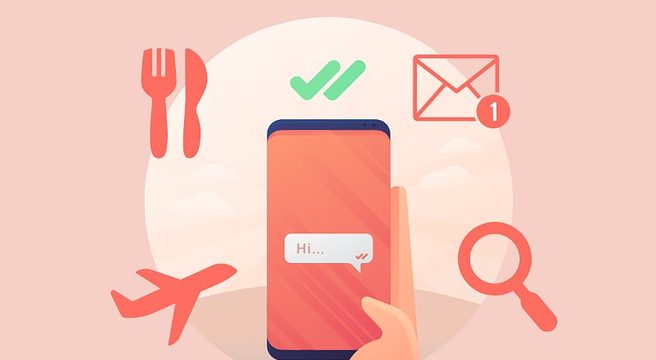When you have a website, the main goal is to motivate the website user to take an action of some sort – this could be to sign up to your newsletter, to buy a product, to simply contact you or perhaps download an ebook you’ve created. The goal is to get as many website visitors to take action as possible, this is what we call a ‘conversion’ – you’ve converted the website user to a customer, to a mailing list subscriber, to a potential sale – they have done whatever it is you want them to do.
There are many ways in which you can encourage your website users to take this action by using simple techniques that will tempt them. Here are 10 top tips for tweaks you can do to your website that will encourage users to take that next step.
1. Create Trust – Give Something to Get Something
Want someone to sign up to a newsletter? Give them an incentive. You get their email address and in return they get something too. A few ideas would be:
- Entry into a competition
- A discount voucher
- A free ebook
- First month free offer
- Access to some interesting articles
If you want the website user to call you, offer them a free phone consultation or a free quote to tempt them.
2. Make it Easy
Make things as easy as possible for your users, the easier something is the more likely they are to do it. If your ultimate goal is to get people to call then make sure your phone number is on every page, don’t make the user hunt for it. If you want someone to sign up to your mailing list then make sure it has as few fields as possible – ideally just an email address, and at most email address and name.
The same thing applies if you have an online shop, don’t make registering for an account a chore. I nearly abandoned a shop recently as the registration had so many fields that took a long time to fill in. It’s not necessary to know my favourite colour and how many pets I had as a child at the registration stage, get the sale first then ask them. Never lose site of the most important thing that you want the website user to do, in the case of ecommerce it is to get a sale. Make that as simple as possible to do then worry about the rest later.
3. Create Urgency
If someone believes they will miss out on something then they are more likely to take action straight away. Phrases like “Only 10 left”, “only 5 days left to order for a Valentine’s delivery” & “2 Hours until the deal finishes” urge people to action. A word of caution, for this technique to work the urgency must be genuine. You can’t say “the deal finishes in 5 minutes” then as soon as time is up restart the clock, this will make a customer lose trust in you.
If you are an Accountant you might have time-sensitive services, so you could use “Only 10 days until self-assessment is due, contact us now for help”, this is creating urgency around an event and there is no doubt that there will be many people panicking that will need your help to get their tax self-assessment finished. If you repair boilers, then you should definitely be prompting users to get a service before winter hits – as no one wants their boiler to break down in the freezing cold.
Whatever product or service you offer, think about how you can create some urgency to get your potential customers to act now, rather than days, weeks or months down the line.
4. Call to Action
A ‘call to action’ (also known as a CTA) is normally a button, a link or some sort of instruction that gets the website user to take action. It could be a “Call this number now” or perhaps “Click this button to contact us”. They are incredibly important and one of the main purposes of your website. Once a user has looked at your website what do you want them to do? Call you? Email you? Buy a product? Whichever it is, it needs to be the most prominent thing on the page.
The best way to make a ‘call to action’ prominent is to choose a contrasting colour to the rest of the site, a larger/bolder font and if it’s a link or button make it big and easy to click on.
5. Benefits Over Features
The strongest way to sell a service or product is to let your audience know how it will benefit them. Take for example Facebook, their service has a lot of features: a messaging service, you can post updates, comment on other people updates, add images etc. – these are all a list of features. They sound fine, but they aren’t the purpose of Facebook. The purpose is to keep you in touch with your friends and family – this is a benefit, people will understand this more than the features and it will be the ultimate selling point.
Think about how your product/service will benefit your audience: Will it save them time? Will it help their lives run smoother? Will it help them make more money? Find your benefits and make sure they have a large focus on your website.
6. Making Best Use of Your Benefits
Once you’ve decided on your benefits and put them on your site, you can also use them on your ‘call to action’ (see point 4 for more details on what a ‘call to action’ is).
You can use your businesses benefits on your ‘call to action’ to entice users to go ahead:
- Instead of “Call us now” use “Call us now to save money”
- Instead of “Sign up now” use “Get more sales, sign up today”
It gives users that extra push into action as they can see the benefit of getting in touch.
7. Create Curiosity
This technique involves giving a little something for free, but then the website user has to take action to get the rest. For example if you’ve written an ebook you could give the first couple of pages away free, or a section of the book that you think is particularly enticing. Then to read the rest the user has to sign up (or pay) to receive it.
If you offer a service you could write an excellent advice article that will help your potential customers out, but they have to call you to get more in-depth help.
8. Rounded Pricing
People prefer round numbers when it comes to prices, they are simple and understandable. It used to be thought that using .99p on a price made users believe they were getting a bargain or some sort of discount, but studies have shown that people perceive round numbers as more trustworthy.
When filling your car with petrol, do you ever try to get to the next round number? I know I do and it always frustratingly goes 1p over! With petrol we have the choice of how much we put in and we don’t choose to put in £19.99 worth of petrol, it’s the norm to try and get to the next round number as that’s where we feel most comfortable. So when adding prices to your site keep this in mind, this small change could be the one thing that encourages some customers to buy.
9. Reassure
Customers want to make sure they are doing the right thing, so at every stage of you site make sure there are reassurances. This could be testimonials, social media praise, reviews or feedback. There are some excellent, trusted online review tools available that you can use to get ratings and testimonials for your company and most have code that you can add to your site to display the ratings automatically.
You could also reassure your customers with offers such as: “30 day money back guarantee”, “No risk, cancel whenever you like”, “Free returns” or a “Free quote” – make sure that these reassurances are not just on your website, when someone calls you make sure they are reassured and also mention it in any subsequent paperwork.
If you have an ecommerce site with products or services and you offer something along the lines of a “30 days money back guarantee” then mention it on every page of the buying process, this will reassure the customer at every stage and give them confidence to buy.
10. Who Are Your Customers?
An obvious one in many ways, make sure when people visit your site that they know who your product or service is for. If you sell to trade only, make this very clear on every page. I was recently looking for a trade-only jewellery company and on many of the sites I looked at it took a good five minutes of searching through their website pages to confirm that they were only selling to trade. For example, if you’re a law firm and only service enterprise size clients then make this abundantly clear, this will stop smaller customers contacting you.
No matter what your audience is, make sure they know your product or service is for them, it will reassure them that they are in the right place.





